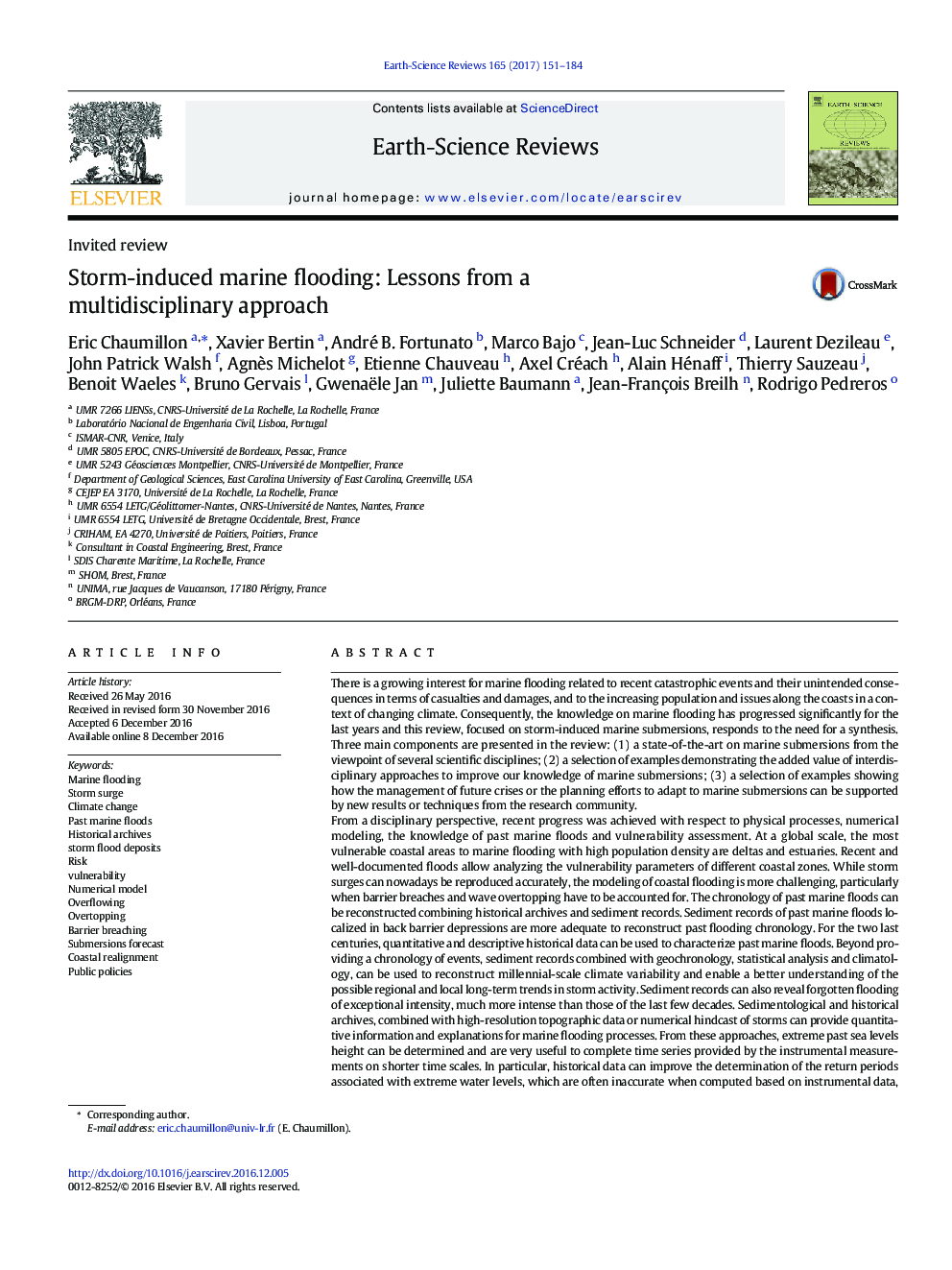| Article ID | Journal | Published Year | Pages | File Type |
|---|---|---|---|---|
| 5785139 | Earth-Science Reviews | 2017 | 34 Pages |
Abstract
Management of future crises and planning efforts to adapt to marine submersions are optimized by predictions of water levels from hydrodynamic models. Such predictions combined with in situ measurements and analysis of human stakes can be used to define a vulnerability index. Then, the efficiency of adaptation measures can be evaluated with respect to the number of lives that could be potentially saved. Numerical experiments also showed that the realignment of coastal defenses could result in water level reduction up to 1Â m in the case where large marshes are flooded. Such managed realignment of coastal defenses may constitute a promising adaptation to storm-induced flooding and future sea level rise. From a legal perspective, only a few texts pay specific attention to the risk of marine flooding whether nationally or globally. Recent catastrophic events and their unintended consequences in terms of death and damages have triggered political decisions, like in USA after hurricane Katrina, and in France after catastrophic floods that occurred in 2010.
Keywords
Related Topics
Physical Sciences and Engineering
Earth and Planetary Sciences
Geology
Authors
Eric Chaumillon, Xavier Bertin, André B. Fortunato, Marco Bajo, Jean-Luc Schneider, Laurent Dezileau, John Patrick Walsh, Agnès Michelot, Etienne Chauveau, Axel Créach, Alain Hénaff, Thierry Sauzeau, Benoit Waeles, Bruno Gervais, Gwenaële Jan,
